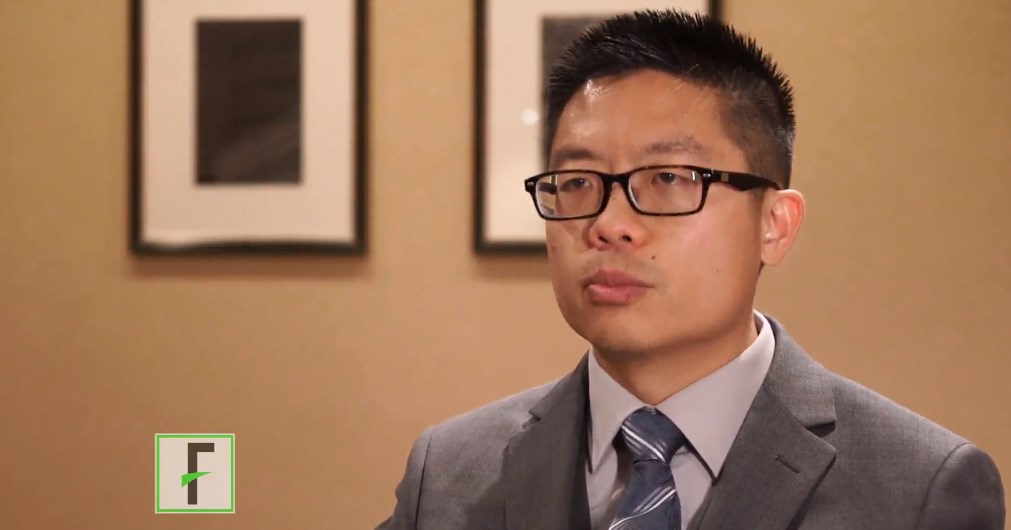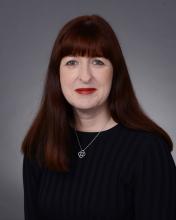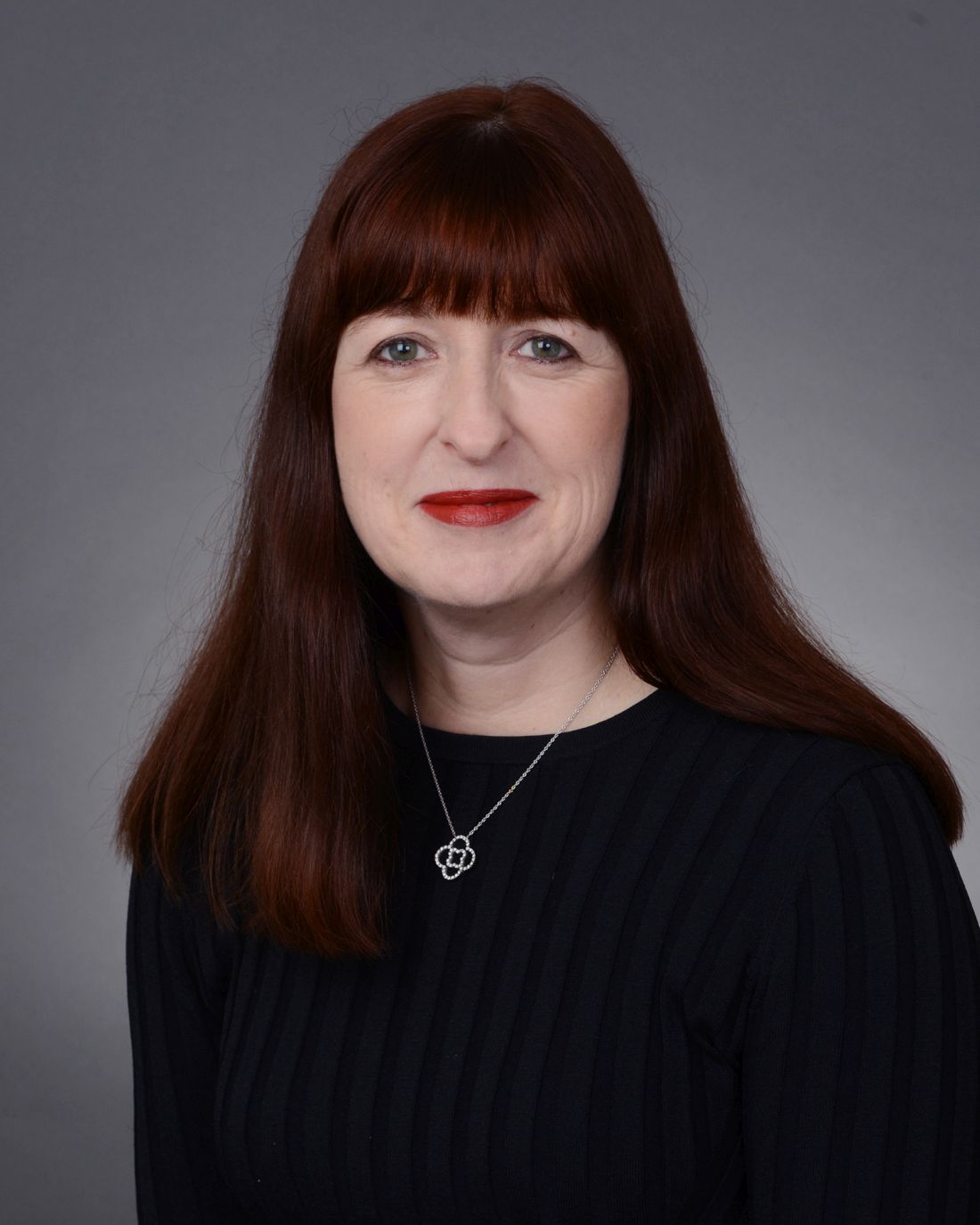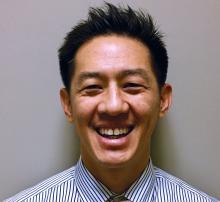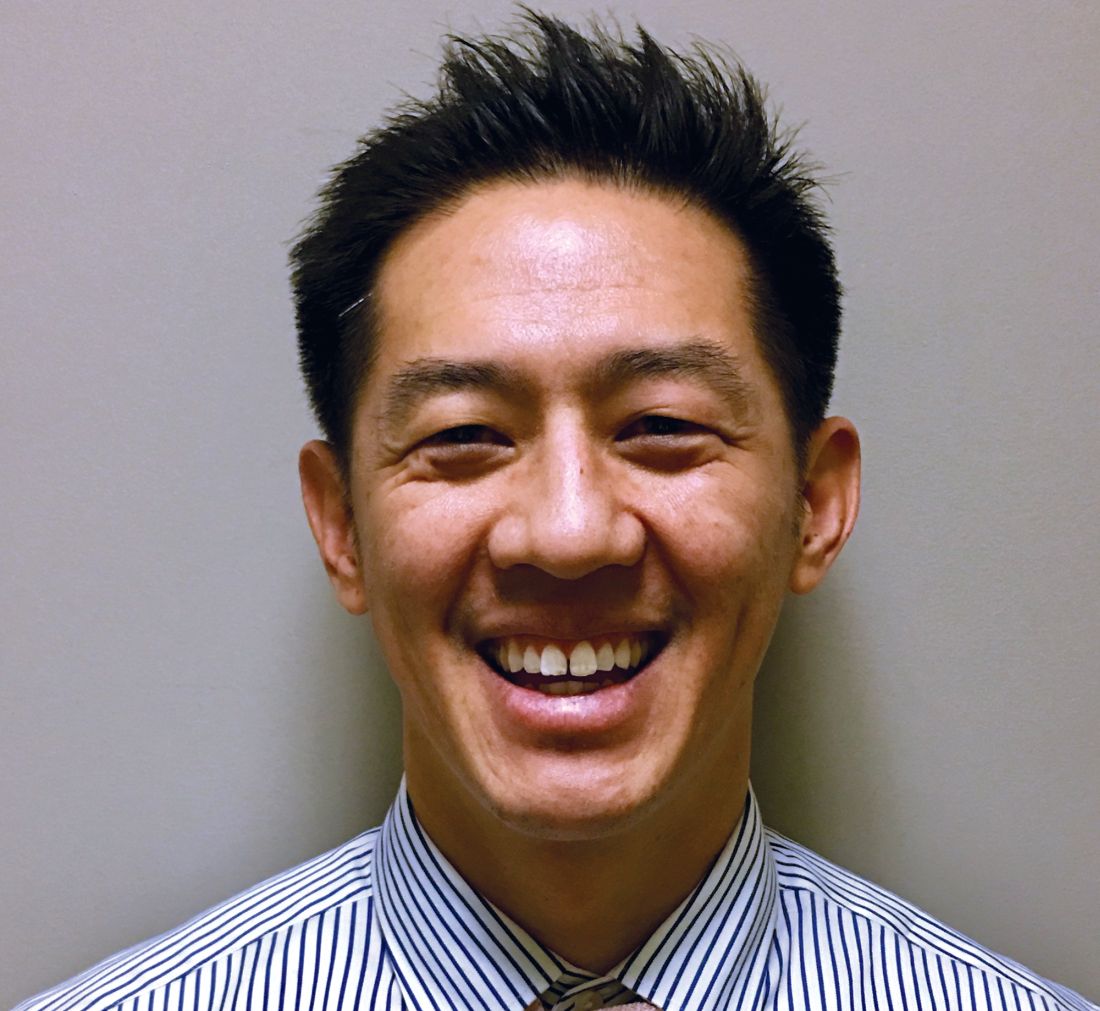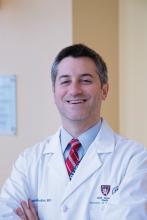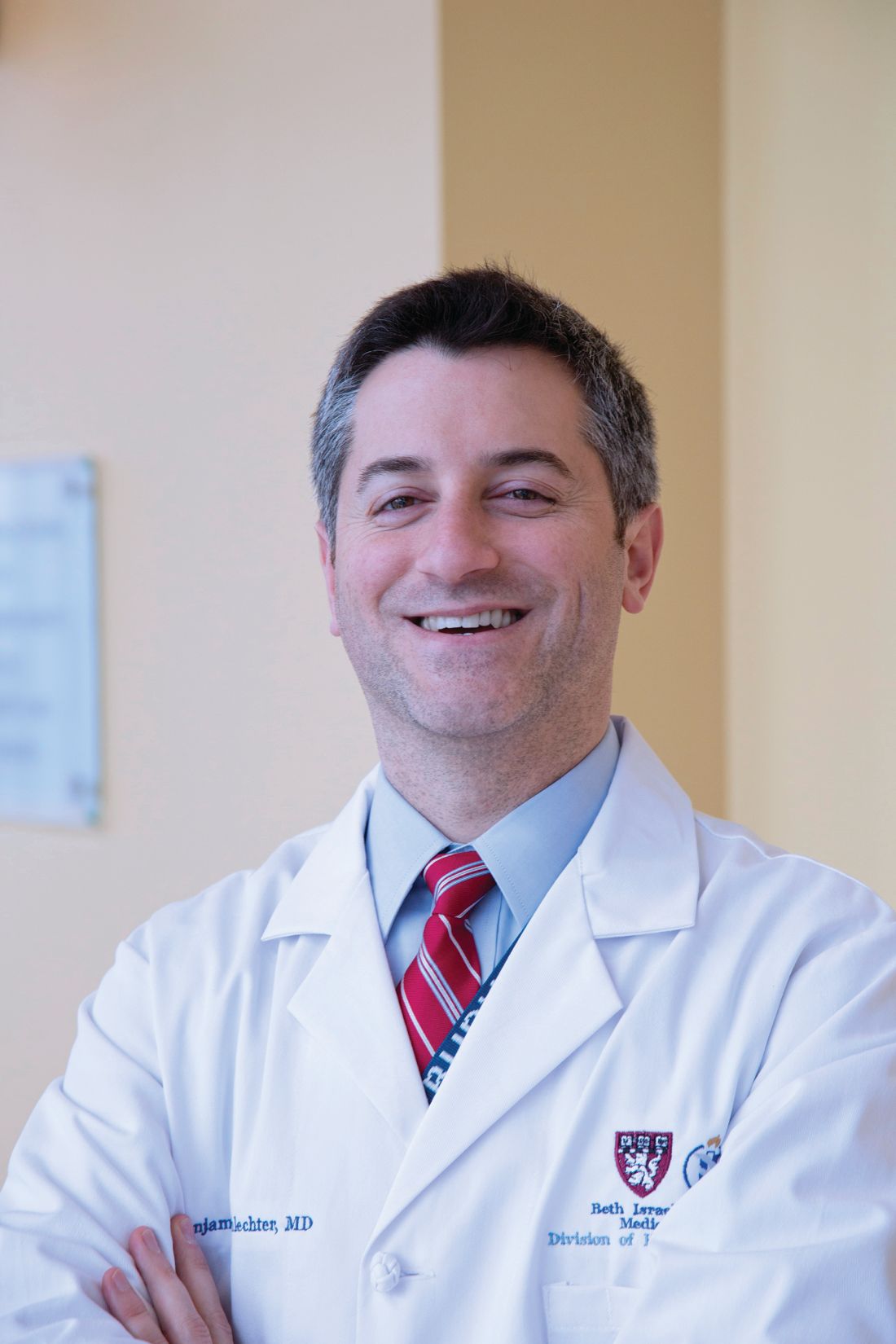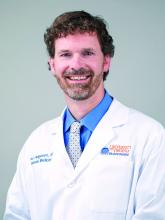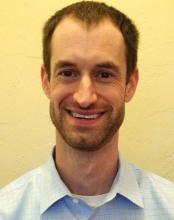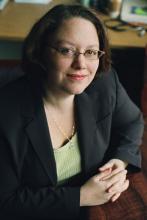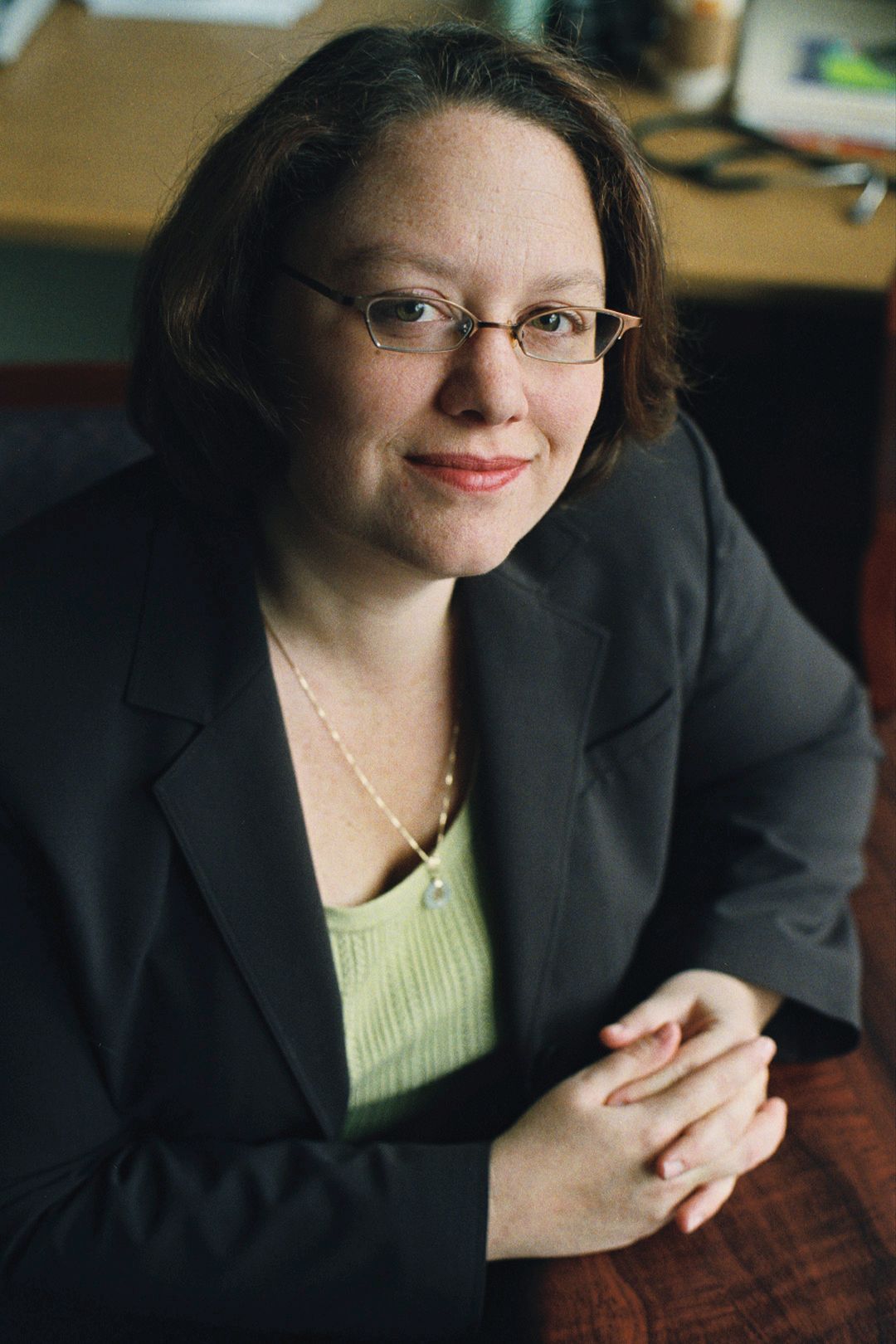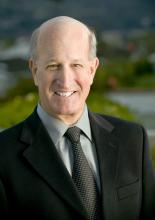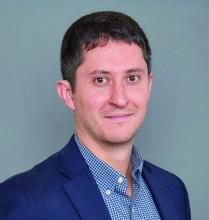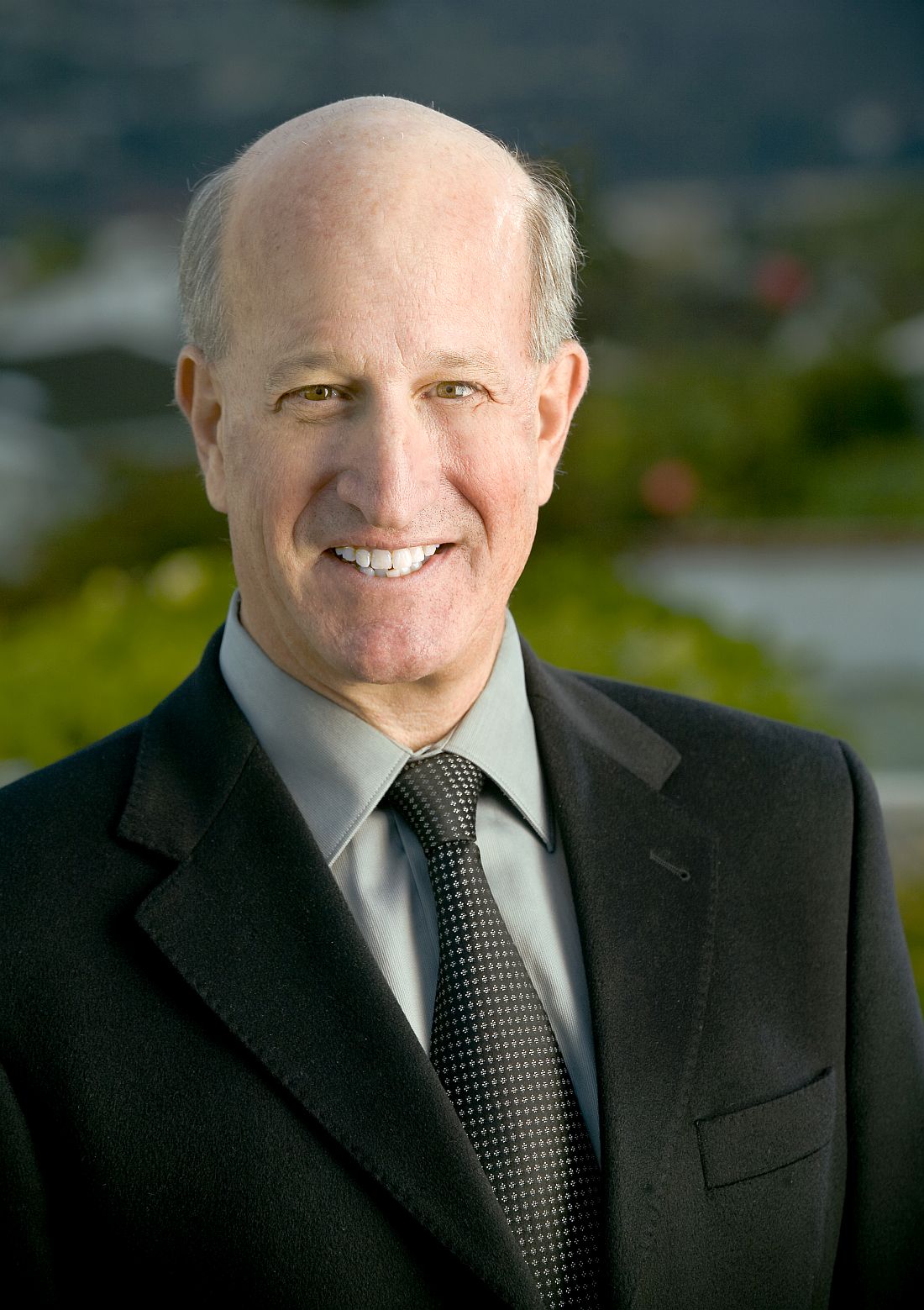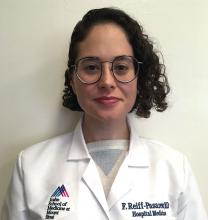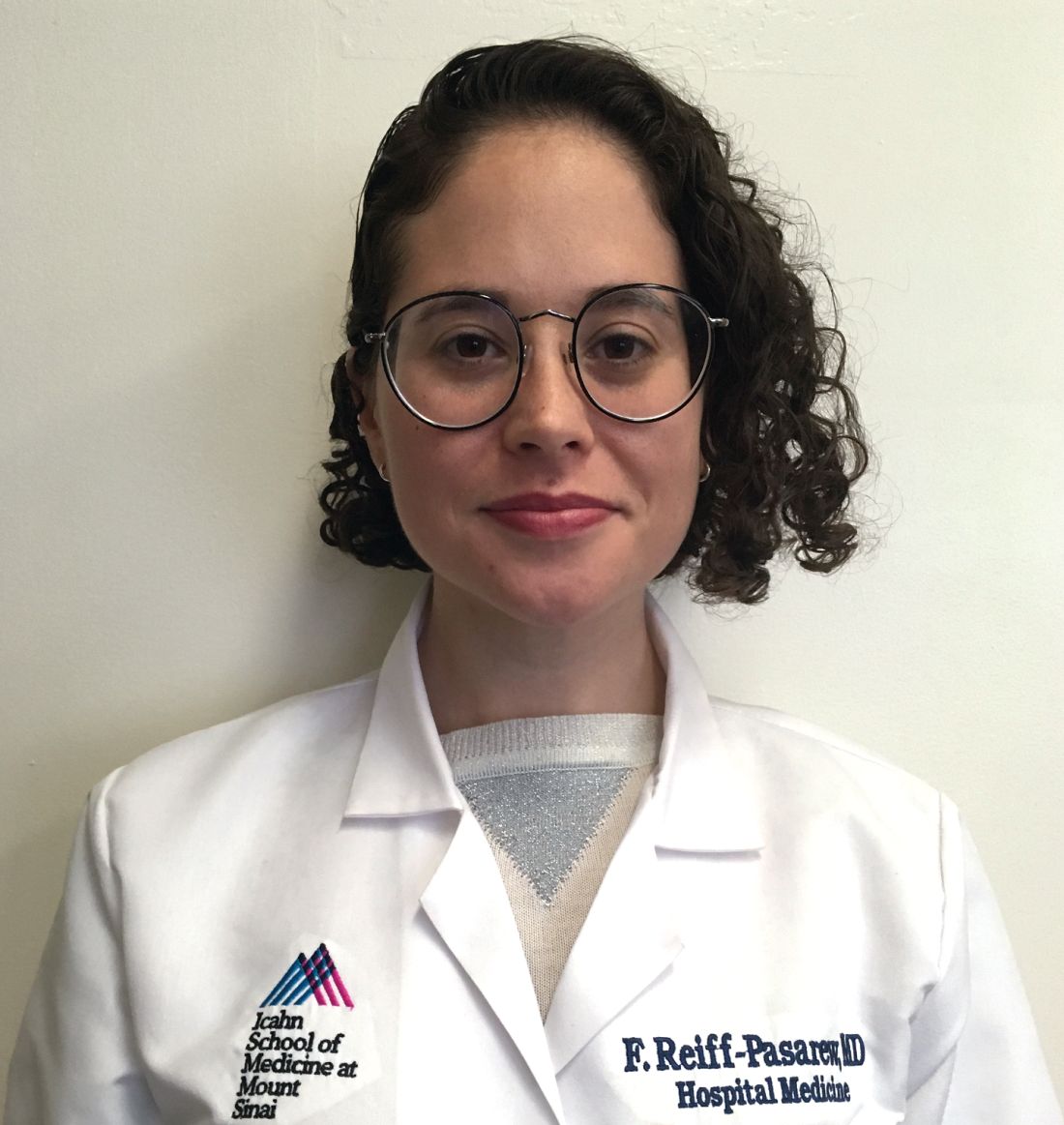User login
RIV awards go to studies of interhospital transfers and ‘virtual hospitalists’
ORLANDO – The top award in the research arm of the Research, Innovations and Clinical Vignettes (RIV) competition, bestowed Monday night at HM18, went to investigators at Brigham and Women’s Hospital in Boston, who looked for trouble spots in interhospital transfers across more than 24,000 cases.
In the innovations category, also awarded Tuesday night, the top award went to clinicians and researchers at the University of Iowa in Iowa City, who attempted to use “virtual hospitalists” to improve local care at rural, critical-access hospitals.
The winning study in the research arm set out to pinpoint problems that could be attributed to process in cases of patients being transferred from one acute care facility to another, and was presented by Stephanie Mueller, MD, MPH, SFHM, associate physician in the hospital medicine unit at Brigham and Women’s.
Dr. Mueller and her colleagues looked at transfers to the hospital from 2005 to 2013. They analyzed the effects that three factors – day of the week, time of day, and admission team “busyness” on the day of the transfer – had on transfers to intensive care within 48 hours and on 30-day mortality. They looked at data for Monday through Thursday, compared with Friday through Sunday, at day, evening, and night transfers as well as the number of patient admissions and discharges to the admitting team on that day.
They found that nighttime arrival was linked with an increased chance of being transferred to the ICU and with 30-day mortality. They also found that weekday arrival was associated with lower odds of mortality among patients getting cardiothoracic and gastrointestinal surgery.
“I think that these are potential targets in which we can actually do something to mitigate the outcomes for these patients,” Dr. Mueller said. “I’m working on a number of studies related to this topic and so it’s sort of validating that this is an important topic and that I should continue doing what I’m doing.”
Raj Sehgal, MD, FHM, a judge in the research arm and associate professor at University of Texas, San Antonio, praised the relevance of the project.
“Interhospital transfer is a topic that a lot of hospitals are dealing with right now,” he said. “It’s always a group of patients that we worry about.”
“One of the strongest things about this poster was the strong methodology,” said another judge, Vineet Gupta, MD, FHM, assistant clinical professor at the University of California, San Diego. “The statistical analysis was really good, very strong, very robust.”
The innovations award–winning study, presented by Ethan Kuperman, MD, MSc, FHM, clinical assistant professor at the University of Iowa, involved an attempt to reduce transfers from the emergency departments of critical-access hospitals in rural Iowa to urban medical centers by providing care with “virtual hospitalists” using tablets.
“Our goal was to treat more patients locally, to keep those patients happy in their communities. That’s what patients get out of it,” Dr. Kuperman told judges. “The hospitals get to keep their family practice doctors doing primary care, stay open, and get more patients. Win, win, win.”
At the critical-access hospital pilot site, virtual hospitalists at the University of Iowa handled all inpatient and observation admissions, with the assistance of local advance practice professionals. The percentage of outside transfers from the emergency department over 64 weeks after implementation was 12.9%, a statistically significant drop from the 16.6% seen in a 24-week baseline period. This did not lead to another goal – a higher daily census at the hospital – though, because there was also a drop in ED visits that ended in a hospital admission.
At two other sites, where virtual hospitalists provided fewer services – at one site, they also helped with preoperative work – there was less of an impact, Dr. Kuperman said. He said he was encouraged that the mean time reported by virtual hospitalists for patient care and documentation was just 2.8 hours a day, but there were days when that hit 12 hours, so there could be a need for “surge” coverage.
He said he’s gratified that the award draws more attention to attempts to improve the care at rural hospitals and that he plans to continue to develop the program.
“Hopefully, this helps get the word out,” Dr. Kuperman said. “I think a lot of work still needs to be done.”
The awards capped a 2-hour competition in which judges went from poster to poster, hearing short presentations from researchers and asking rapid-fire questions. The decisions were difficult in both categories, the judges said. The judges in the innovations category, for instance, deliberated at a table outside the exhibit hall for about 20 minutes before coming to a decision.
The pool of 20 finalists – 10 in each category – were chosen from hundreds of submissions considered during the final two rounds of judging on Tuesday night. In the research category, 261 abstracts were accepted from the 319 submitted; in the innovations category, 140 were accepted from the 207 submitted.
ORLANDO – The top award in the research arm of the Research, Innovations and Clinical Vignettes (RIV) competition, bestowed Monday night at HM18, went to investigators at Brigham and Women’s Hospital in Boston, who looked for trouble spots in interhospital transfers across more than 24,000 cases.
In the innovations category, also awarded Tuesday night, the top award went to clinicians and researchers at the University of Iowa in Iowa City, who attempted to use “virtual hospitalists” to improve local care at rural, critical-access hospitals.
The winning study in the research arm set out to pinpoint problems that could be attributed to process in cases of patients being transferred from one acute care facility to another, and was presented by Stephanie Mueller, MD, MPH, SFHM, associate physician in the hospital medicine unit at Brigham and Women’s.
Dr. Mueller and her colleagues looked at transfers to the hospital from 2005 to 2013. They analyzed the effects that three factors – day of the week, time of day, and admission team “busyness” on the day of the transfer – had on transfers to intensive care within 48 hours and on 30-day mortality. They looked at data for Monday through Thursday, compared with Friday through Sunday, at day, evening, and night transfers as well as the number of patient admissions and discharges to the admitting team on that day.
They found that nighttime arrival was linked with an increased chance of being transferred to the ICU and with 30-day mortality. They also found that weekday arrival was associated with lower odds of mortality among patients getting cardiothoracic and gastrointestinal surgery.
“I think that these are potential targets in which we can actually do something to mitigate the outcomes for these patients,” Dr. Mueller said. “I’m working on a number of studies related to this topic and so it’s sort of validating that this is an important topic and that I should continue doing what I’m doing.”
Raj Sehgal, MD, FHM, a judge in the research arm and associate professor at University of Texas, San Antonio, praised the relevance of the project.
“Interhospital transfer is a topic that a lot of hospitals are dealing with right now,” he said. “It’s always a group of patients that we worry about.”
“One of the strongest things about this poster was the strong methodology,” said another judge, Vineet Gupta, MD, FHM, assistant clinical professor at the University of California, San Diego. “The statistical analysis was really good, very strong, very robust.”
The innovations award–winning study, presented by Ethan Kuperman, MD, MSc, FHM, clinical assistant professor at the University of Iowa, involved an attempt to reduce transfers from the emergency departments of critical-access hospitals in rural Iowa to urban medical centers by providing care with “virtual hospitalists” using tablets.
“Our goal was to treat more patients locally, to keep those patients happy in their communities. That’s what patients get out of it,” Dr. Kuperman told judges. “The hospitals get to keep their family practice doctors doing primary care, stay open, and get more patients. Win, win, win.”
At the critical-access hospital pilot site, virtual hospitalists at the University of Iowa handled all inpatient and observation admissions, with the assistance of local advance practice professionals. The percentage of outside transfers from the emergency department over 64 weeks after implementation was 12.9%, a statistically significant drop from the 16.6% seen in a 24-week baseline period. This did not lead to another goal – a higher daily census at the hospital – though, because there was also a drop in ED visits that ended in a hospital admission.
At two other sites, where virtual hospitalists provided fewer services – at one site, they also helped with preoperative work – there was less of an impact, Dr. Kuperman said. He said he was encouraged that the mean time reported by virtual hospitalists for patient care and documentation was just 2.8 hours a day, but there were days when that hit 12 hours, so there could be a need for “surge” coverage.
He said he’s gratified that the award draws more attention to attempts to improve the care at rural hospitals and that he plans to continue to develop the program.
“Hopefully, this helps get the word out,” Dr. Kuperman said. “I think a lot of work still needs to be done.”
The awards capped a 2-hour competition in which judges went from poster to poster, hearing short presentations from researchers and asking rapid-fire questions. The decisions were difficult in both categories, the judges said. The judges in the innovations category, for instance, deliberated at a table outside the exhibit hall for about 20 minutes before coming to a decision.
The pool of 20 finalists – 10 in each category – were chosen from hundreds of submissions considered during the final two rounds of judging on Tuesday night. In the research category, 261 abstracts were accepted from the 319 submitted; in the innovations category, 140 were accepted from the 207 submitted.
ORLANDO – The top award in the research arm of the Research, Innovations and Clinical Vignettes (RIV) competition, bestowed Monday night at HM18, went to investigators at Brigham and Women’s Hospital in Boston, who looked for trouble spots in interhospital transfers across more than 24,000 cases.
In the innovations category, also awarded Tuesday night, the top award went to clinicians and researchers at the University of Iowa in Iowa City, who attempted to use “virtual hospitalists” to improve local care at rural, critical-access hospitals.
The winning study in the research arm set out to pinpoint problems that could be attributed to process in cases of patients being transferred from one acute care facility to another, and was presented by Stephanie Mueller, MD, MPH, SFHM, associate physician in the hospital medicine unit at Brigham and Women’s.
Dr. Mueller and her colleagues looked at transfers to the hospital from 2005 to 2013. They analyzed the effects that three factors – day of the week, time of day, and admission team “busyness” on the day of the transfer – had on transfers to intensive care within 48 hours and on 30-day mortality. They looked at data for Monday through Thursday, compared with Friday through Sunday, at day, evening, and night transfers as well as the number of patient admissions and discharges to the admitting team on that day.
They found that nighttime arrival was linked with an increased chance of being transferred to the ICU and with 30-day mortality. They also found that weekday arrival was associated with lower odds of mortality among patients getting cardiothoracic and gastrointestinal surgery.
“I think that these are potential targets in which we can actually do something to mitigate the outcomes for these patients,” Dr. Mueller said. “I’m working on a number of studies related to this topic and so it’s sort of validating that this is an important topic and that I should continue doing what I’m doing.”
Raj Sehgal, MD, FHM, a judge in the research arm and associate professor at University of Texas, San Antonio, praised the relevance of the project.
“Interhospital transfer is a topic that a lot of hospitals are dealing with right now,” he said. “It’s always a group of patients that we worry about.”
“One of the strongest things about this poster was the strong methodology,” said another judge, Vineet Gupta, MD, FHM, assistant clinical professor at the University of California, San Diego. “The statistical analysis was really good, very strong, very robust.”
The innovations award–winning study, presented by Ethan Kuperman, MD, MSc, FHM, clinical assistant professor at the University of Iowa, involved an attempt to reduce transfers from the emergency departments of critical-access hospitals in rural Iowa to urban medical centers by providing care with “virtual hospitalists” using tablets.
“Our goal was to treat more patients locally, to keep those patients happy in their communities. That’s what patients get out of it,” Dr. Kuperman told judges. “The hospitals get to keep their family practice doctors doing primary care, stay open, and get more patients. Win, win, win.”
At the critical-access hospital pilot site, virtual hospitalists at the University of Iowa handled all inpatient and observation admissions, with the assistance of local advance practice professionals. The percentage of outside transfers from the emergency department over 64 weeks after implementation was 12.9%, a statistically significant drop from the 16.6% seen in a 24-week baseline period. This did not lead to another goal – a higher daily census at the hospital – though, because there was also a drop in ED visits that ended in a hospital admission.
At two other sites, where virtual hospitalists provided fewer services – at one site, they also helped with preoperative work – there was less of an impact, Dr. Kuperman said. He said he was encouraged that the mean time reported by virtual hospitalists for patient care and documentation was just 2.8 hours a day, but there were days when that hit 12 hours, so there could be a need for “surge” coverage.
He said he’s gratified that the award draws more attention to attempts to improve the care at rural hospitals and that he plans to continue to develop the program.
“Hopefully, this helps get the word out,” Dr. Kuperman said. “I think a lot of work still needs to be done.”
The awards capped a 2-hour competition in which judges went from poster to poster, hearing short presentations from researchers and asking rapid-fire questions. The decisions were difficult in both categories, the judges said. The judges in the innovations category, for instance, deliberated at a table outside the exhibit hall for about 20 minutes before coming to a decision.
The pool of 20 finalists – 10 in each category – were chosen from hundreds of submissions considered during the final two rounds of judging on Tuesday night. In the research category, 261 abstracts were accepted from the 319 submitted; in the innovations category, 140 were accepted from the 207 submitted.
REPORTING FROM HM18
Video: The SHM Physicians in Training Committee – increasing the hospitalist pipeline
ORLANDO – In a video interview, Brian Kwan, MD, SFHM, of the University of California, San Diego, discusses the role of the SHM Physicians in Training Committee in “increasing the hospitalist pipeline.”
In discussing the work of the committee, Dr. Kwan describes how “a lot of our initiatives really focus on the training and development and basically nurturing them from becoming students to residents to early-career hospitalists.”
Two of the key programs he discusses are the Student Scholarship Program and the “new-this-year” Resident Travel Grant, among other initiatives that the committee is exploring.
ORLANDO – In a video interview, Brian Kwan, MD, SFHM, of the University of California, San Diego, discusses the role of the SHM Physicians in Training Committee in “increasing the hospitalist pipeline.”
In discussing the work of the committee, Dr. Kwan describes how “a lot of our initiatives really focus on the training and development and basically nurturing them from becoming students to residents to early-career hospitalists.”
Two of the key programs he discusses are the Student Scholarship Program and the “new-this-year” Resident Travel Grant, among other initiatives that the committee is exploring.
ORLANDO – In a video interview, Brian Kwan, MD, SFHM, of the University of California, San Diego, discusses the role of the SHM Physicians in Training Committee in “increasing the hospitalist pipeline.”
In discussing the work of the committee, Dr. Kwan describes how “a lot of our initiatives really focus on the training and development and basically nurturing them from becoming students to residents to early-career hospitalists.”
Two of the key programs he discusses are the Student Scholarship Program and the “new-this-year” Resident Travel Grant, among other initiatives that the committee is exploring.
REPORTING FROM HOSPITAL MEDICINE 2018
New developments in critical care and sepsis
Sepsis and critical care issues are in the spotlight at HM18, and these hot topics were the focus of the Monday education session, “He-Who-Shall-Not-Be-Named: Updates in Sepsis and Critical Care.”
Patricia Kritek, MD, EdM, of the University of Washington, Seattle, led an interactive and engaging session, educating attendees about the current research in sepsis and critical care areas so they would feel comfortable implementing the latest evidence into practice in the ICU.
The session focused on “what’s new” in critical care and sepsis from the literature published in the past year.
According to the National Center for Health Statistics at the Centers for Disease Control and Prevention, sepsis or septicemia patients averaged a 75% longer length of stay and were more than eight times likely to die, compared with patients hospitalized for other conditions.
“There has been a lot of discussion about steroids in sepsis that is potentially practice changing,” Dr. Kritek said in an interview. To tackle the always-tricky topic of steroids and sepsis, Dr. Kritek selected a trio of studies for review and discussion. In the first, vitamin C was potentially as effective as hydrocortisone and thiamine for the treatment of severe sepsis and septic shock (CHEST. 2017;151[6]:1229‐38). Another study addressed adjunctive glucocorticoid therapy for septic shock patients, and a third examined the use of hydrocortisone plus fludrocortisone for adults with septic shock.
The trials not involving vitamin C were published in the New England Journal of Medicine this year, conducted in Australia (2018;378:797‐808) and France (2018;378:809‐18), and included 3,658 and 1,241 adult sepsis patients, respectively. The studies were similar in size and design. Based on these two studies, hydrocortisone appears to shorten septic shock duration, and treatment with hydrocortisone and possibly fludrocortisone could be helpful for the more seriously ill patients, said Dr. Kritek. As for the value of vitamin C and thiamine, “the jury is still out,” she noted.
Sepsis and critical care issues are in the spotlight at HM18, and these hot topics were the focus of the Monday education session, “He-Who-Shall-Not-Be-Named: Updates in Sepsis and Critical Care.”
Patricia Kritek, MD, EdM, of the University of Washington, Seattle, led an interactive and engaging session, educating attendees about the current research in sepsis and critical care areas so they would feel comfortable implementing the latest evidence into practice in the ICU.
The session focused on “what’s new” in critical care and sepsis from the literature published in the past year.
According to the National Center for Health Statistics at the Centers for Disease Control and Prevention, sepsis or septicemia patients averaged a 75% longer length of stay and were more than eight times likely to die, compared with patients hospitalized for other conditions.
“There has been a lot of discussion about steroids in sepsis that is potentially practice changing,” Dr. Kritek said in an interview. To tackle the always-tricky topic of steroids and sepsis, Dr. Kritek selected a trio of studies for review and discussion. In the first, vitamin C was potentially as effective as hydrocortisone and thiamine for the treatment of severe sepsis and septic shock (CHEST. 2017;151[6]:1229‐38). Another study addressed adjunctive glucocorticoid therapy for septic shock patients, and a third examined the use of hydrocortisone plus fludrocortisone for adults with septic shock.
The trials not involving vitamin C were published in the New England Journal of Medicine this year, conducted in Australia (2018;378:797‐808) and France (2018;378:809‐18), and included 3,658 and 1,241 adult sepsis patients, respectively. The studies were similar in size and design. Based on these two studies, hydrocortisone appears to shorten septic shock duration, and treatment with hydrocortisone and possibly fludrocortisone could be helpful for the more seriously ill patients, said Dr. Kritek. As for the value of vitamin C and thiamine, “the jury is still out,” she noted.
Sepsis and critical care issues are in the spotlight at HM18, and these hot topics were the focus of the Monday education session, “He-Who-Shall-Not-Be-Named: Updates in Sepsis and Critical Care.”
Patricia Kritek, MD, EdM, of the University of Washington, Seattle, led an interactive and engaging session, educating attendees about the current research in sepsis and critical care areas so they would feel comfortable implementing the latest evidence into practice in the ICU.
The session focused on “what’s new” in critical care and sepsis from the literature published in the past year.
According to the National Center for Health Statistics at the Centers for Disease Control and Prevention, sepsis or septicemia patients averaged a 75% longer length of stay and were more than eight times likely to die, compared with patients hospitalized for other conditions.
“There has been a lot of discussion about steroids in sepsis that is potentially practice changing,” Dr. Kritek said in an interview. To tackle the always-tricky topic of steroids and sepsis, Dr. Kritek selected a trio of studies for review and discussion. In the first, vitamin C was potentially as effective as hydrocortisone and thiamine for the treatment of severe sepsis and septic shock (CHEST. 2017;151[6]:1229‐38). Another study addressed adjunctive glucocorticoid therapy for septic shock patients, and a third examined the use of hydrocortisone plus fludrocortisone for adults with septic shock.
The trials not involving vitamin C were published in the New England Journal of Medicine this year, conducted in Australia (2018;378:797‐808) and France (2018;378:809‐18), and included 3,658 and 1,241 adult sepsis patients, respectively. The studies were similar in size and design. Based on these two studies, hydrocortisone appears to shorten septic shock duration, and treatment with hydrocortisone and possibly fludrocortisone could be helpful for the more seriously ill patients, said Dr. Kritek. As for the value of vitamin C and thiamine, “the jury is still out,” she noted.
Antibiotic awareness tops ID agenda
Antibiotic resistance is “one of the greatest problems we face,” according to Jennifer A. Hanrahan, DO, MSc, of MetroHealth Medical Center in Cleveland. Dr. Hanrahan led the education session, “A Bug’s Life: Infectious Disease Pearls,” and she called the topic “timely and timeless.”
Antibiotic resistance stems from several problems, Dr. Hanrahan said in her Monday presentation. “One of these is overuse of antibiotics, specifically overuse of broad-spectrum antibiotics, and the other problem is overuse of testing.”
Data from the Centers for Disease Control and Prevention show that at least 2 million people in the United States develop antibiotic-resistant bacterial infections each year. At least 23,000 of these patients die each year because of these infections.
In 2013, the CDC published a report on drug-resistant threats in the United States. The three offenders deemed most serious – Clostridium difficile, Carbapenem-resistant Enterobacteriaceae, and Neisseria gonorrhoeae, continue to challenge clinicians.
Clinicians can help curb antibiotic resistance by practicing good stewardship, said Dr. Hanrahan. “Antimicrobial stewardship and laboratory stewardship are two things that can greatly improve patient care and outcomes for patients,” she said.
“Testing stewardship means ordering tests that are necessary based on signs and symptoms,” said Dr. Hanrahan. “For example, people often order urine cultures when there are no symptoms of urinary tract infection, and then end up treating positive cultures with antibiotics even when there are no symptoms of infection. This leads to unnecessary antibiotic exposure,” she noted.
The CDC’s core plans to fight antimicrobial resistance include:
- Preventing infections in the first place: The CDC emphasizes the importance of prevention through hand washing, safe food handling practices, and immunizations.
- Tracking data: The CDC collects and uses data on resistant infections to identify risk factors for resistance and develop strategies to prevent the spread of resistant bacteria.
- Practicing antibiotic stewardship: As Dr. Hanrahan noted, judicious use of antibiotics can help cut down on resistant bacteria.
- Developing alternatives: The CDC supports the development of new antibiotics and new tests to track antibacterial resistance.
Dr. Hanrahan discussed the Top 10 things hospitalists can do to improve lab testing and antimicrobial use.
“Hospitalists must recognize the need to decrease antibiotic use, utilize laboratory testing appropriately, and improve patient safety,” she said.
“There are a wide range of resources available on the Internet that can help you delve further into this topic and to find the appropriate balance for testing and treatment,” Dr. Hanrahan concluded.
Antibiotic resistance is “one of the greatest problems we face,” according to Jennifer A. Hanrahan, DO, MSc, of MetroHealth Medical Center in Cleveland. Dr. Hanrahan led the education session, “A Bug’s Life: Infectious Disease Pearls,” and she called the topic “timely and timeless.”
Antibiotic resistance stems from several problems, Dr. Hanrahan said in her Monday presentation. “One of these is overuse of antibiotics, specifically overuse of broad-spectrum antibiotics, and the other problem is overuse of testing.”
Data from the Centers for Disease Control and Prevention show that at least 2 million people in the United States develop antibiotic-resistant bacterial infections each year. At least 23,000 of these patients die each year because of these infections.
In 2013, the CDC published a report on drug-resistant threats in the United States. The three offenders deemed most serious – Clostridium difficile, Carbapenem-resistant Enterobacteriaceae, and Neisseria gonorrhoeae, continue to challenge clinicians.
Clinicians can help curb antibiotic resistance by practicing good stewardship, said Dr. Hanrahan. “Antimicrobial stewardship and laboratory stewardship are two things that can greatly improve patient care and outcomes for patients,” she said.
“Testing stewardship means ordering tests that are necessary based on signs and symptoms,” said Dr. Hanrahan. “For example, people often order urine cultures when there are no symptoms of urinary tract infection, and then end up treating positive cultures with antibiotics even when there are no symptoms of infection. This leads to unnecessary antibiotic exposure,” she noted.
The CDC’s core plans to fight antimicrobial resistance include:
- Preventing infections in the first place: The CDC emphasizes the importance of prevention through hand washing, safe food handling practices, and immunizations.
- Tracking data: The CDC collects and uses data on resistant infections to identify risk factors for resistance and develop strategies to prevent the spread of resistant bacteria.
- Practicing antibiotic stewardship: As Dr. Hanrahan noted, judicious use of antibiotics can help cut down on resistant bacteria.
- Developing alternatives: The CDC supports the development of new antibiotics and new tests to track antibacterial resistance.
Dr. Hanrahan discussed the Top 10 things hospitalists can do to improve lab testing and antimicrobial use.
“Hospitalists must recognize the need to decrease antibiotic use, utilize laboratory testing appropriately, and improve patient safety,” she said.
“There are a wide range of resources available on the Internet that can help you delve further into this topic and to find the appropriate balance for testing and treatment,” Dr. Hanrahan concluded.
Antibiotic resistance is “one of the greatest problems we face,” according to Jennifer A. Hanrahan, DO, MSc, of MetroHealth Medical Center in Cleveland. Dr. Hanrahan led the education session, “A Bug’s Life: Infectious Disease Pearls,” and she called the topic “timely and timeless.”
Antibiotic resistance stems from several problems, Dr. Hanrahan said in her Monday presentation. “One of these is overuse of antibiotics, specifically overuse of broad-spectrum antibiotics, and the other problem is overuse of testing.”
Data from the Centers for Disease Control and Prevention show that at least 2 million people in the United States develop antibiotic-resistant bacterial infections each year. At least 23,000 of these patients die each year because of these infections.
In 2013, the CDC published a report on drug-resistant threats in the United States. The three offenders deemed most serious – Clostridium difficile, Carbapenem-resistant Enterobacteriaceae, and Neisseria gonorrhoeae, continue to challenge clinicians.
Clinicians can help curb antibiotic resistance by practicing good stewardship, said Dr. Hanrahan. “Antimicrobial stewardship and laboratory stewardship are two things that can greatly improve patient care and outcomes for patients,” she said.
“Testing stewardship means ordering tests that are necessary based on signs and symptoms,” said Dr. Hanrahan. “For example, people often order urine cultures when there are no symptoms of urinary tract infection, and then end up treating positive cultures with antibiotics even when there are no symptoms of infection. This leads to unnecessary antibiotic exposure,” she noted.
The CDC’s core plans to fight antimicrobial resistance include:
- Preventing infections in the first place: The CDC emphasizes the importance of prevention through hand washing, safe food handling practices, and immunizations.
- Tracking data: The CDC collects and uses data on resistant infections to identify risk factors for resistance and develop strategies to prevent the spread of resistant bacteria.
- Practicing antibiotic stewardship: As Dr. Hanrahan noted, judicious use of antibiotics can help cut down on resistant bacteria.
- Developing alternatives: The CDC supports the development of new antibiotics and new tests to track antibacterial resistance.
Dr. Hanrahan discussed the Top 10 things hospitalists can do to improve lab testing and antimicrobial use.
“Hospitalists must recognize the need to decrease antibiotic use, utilize laboratory testing appropriately, and improve patient safety,” she said.
“There are a wide range of resources available on the Internet that can help you delve further into this topic and to find the appropriate balance for testing and treatment,” Dr. Hanrahan concluded.
Myriad career options for hospitalists
The “Hospitalist Career Options” education session provided future and early-career hospitalists with information about the diversity of potential career tracks within hospital medicine.
“There are so many different things that people do and that’s what so amazing about hospital medicine,” said Dennis Chang, MD, FHM, associate professor in Mount Sinai Hospital’s division of hospital medicine, New York, in his talk on Monday. “You never really know where its going to go, and it’s really a matter of keeping your eye out for opportunities.”
Hospital medicine offers a diverse and interesting career that presents a variety of professional opportunities to those who practice it, Dr. Chang said. He noted that many hospitalists are gravitating toward careers in improving patient safety and quality improvement.
“They are working on the systems that are in the hospital and trying to make them more efficient and safer for patients,” he said.
Keeping with the theme of the talk, Dr. Chang pointed out that there a number of other specialty areas that hospitalists can explore.
“A lot of hospitalists also get into education, educating students and residents,” he said. If teaching is not your desired area of practice, you can also try your hand at “becoming CMO [chief medical officer] of a hospital” or other areas of administrative leadership or “informatics and electronic health records.” Most importantly, there are a variety of professional avenues available within hospital medicine, he added.
Dr. Chang said that the design of the session was intended to help early-career hospitalists navigate their professional path and indicated that it definitely would have provided him with some guidance. “When I was a resident thinking about what I wanted to do after residency, I didn’t necessarily know what hospital medicine was,” he said. “I think I thought it was a cool clinical job, but I didn’t understand that there were so many other things that you could do with it that are not clinical, but still really interesting.”
Dr. Chang emphasized that early-career hospitalists do not need to have a fully formed idea of the professional track they wish to pursue.
“It’s okay if you don’t know what you want to do, just do what you think is interesting and it’s amazing the things you can end up doing,” he said, noting that the best thing for residents and early-career hospitalists is “to get experience and training.”
At the end of the talk, Dr. Chang and his copresenter Daniel Ricotta, MD, offered attendees tips about other events that they might attend to advance their careers. Dr. Chang noted that SHM offers many smaller conferences that offer career development skills such as leadership.
The “Hospitalist Career Options” education session provided future and early-career hospitalists with information about the diversity of potential career tracks within hospital medicine.
“There are so many different things that people do and that’s what so amazing about hospital medicine,” said Dennis Chang, MD, FHM, associate professor in Mount Sinai Hospital’s division of hospital medicine, New York, in his talk on Monday. “You never really know where its going to go, and it’s really a matter of keeping your eye out for opportunities.”
Hospital medicine offers a diverse and interesting career that presents a variety of professional opportunities to those who practice it, Dr. Chang said. He noted that many hospitalists are gravitating toward careers in improving patient safety and quality improvement.
“They are working on the systems that are in the hospital and trying to make them more efficient and safer for patients,” he said.
Keeping with the theme of the talk, Dr. Chang pointed out that there a number of other specialty areas that hospitalists can explore.
“A lot of hospitalists also get into education, educating students and residents,” he said. If teaching is not your desired area of practice, you can also try your hand at “becoming CMO [chief medical officer] of a hospital” or other areas of administrative leadership or “informatics and electronic health records.” Most importantly, there are a variety of professional avenues available within hospital medicine, he added.
Dr. Chang said that the design of the session was intended to help early-career hospitalists navigate their professional path and indicated that it definitely would have provided him with some guidance. “When I was a resident thinking about what I wanted to do after residency, I didn’t necessarily know what hospital medicine was,” he said. “I think I thought it was a cool clinical job, but I didn’t understand that there were so many other things that you could do with it that are not clinical, but still really interesting.”
Dr. Chang emphasized that early-career hospitalists do not need to have a fully formed idea of the professional track they wish to pursue.
“It’s okay if you don’t know what you want to do, just do what you think is interesting and it’s amazing the things you can end up doing,” he said, noting that the best thing for residents and early-career hospitalists is “to get experience and training.”
At the end of the talk, Dr. Chang and his copresenter Daniel Ricotta, MD, offered attendees tips about other events that they might attend to advance their careers. Dr. Chang noted that SHM offers many smaller conferences that offer career development skills such as leadership.
The “Hospitalist Career Options” education session provided future and early-career hospitalists with information about the diversity of potential career tracks within hospital medicine.
“There are so many different things that people do and that’s what so amazing about hospital medicine,” said Dennis Chang, MD, FHM, associate professor in Mount Sinai Hospital’s division of hospital medicine, New York, in his talk on Monday. “You never really know where its going to go, and it’s really a matter of keeping your eye out for opportunities.”
Hospital medicine offers a diverse and interesting career that presents a variety of professional opportunities to those who practice it, Dr. Chang said. He noted that many hospitalists are gravitating toward careers in improving patient safety and quality improvement.
“They are working on the systems that are in the hospital and trying to make them more efficient and safer for patients,” he said.
Keeping with the theme of the talk, Dr. Chang pointed out that there a number of other specialty areas that hospitalists can explore.
“A lot of hospitalists also get into education, educating students and residents,” he said. If teaching is not your desired area of practice, you can also try your hand at “becoming CMO [chief medical officer] of a hospital” or other areas of administrative leadership or “informatics and electronic health records.” Most importantly, there are a variety of professional avenues available within hospital medicine, he added.
Dr. Chang said that the design of the session was intended to help early-career hospitalists navigate their professional path and indicated that it definitely would have provided him with some guidance. “When I was a resident thinking about what I wanted to do after residency, I didn’t necessarily know what hospital medicine was,” he said. “I think I thought it was a cool clinical job, but I didn’t understand that there were so many other things that you could do with it that are not clinical, but still really interesting.”
Dr. Chang emphasized that early-career hospitalists do not need to have a fully formed idea of the professional track they wish to pursue.
“It’s okay if you don’t know what you want to do, just do what you think is interesting and it’s amazing the things you can end up doing,” he said, noting that the best thing for residents and early-career hospitalists is “to get experience and training.”
At the end of the talk, Dr. Chang and his copresenter Daniel Ricotta, MD, offered attendees tips about other events that they might attend to advance their careers. Dr. Chang noted that SHM offers many smaller conferences that offer career development skills such as leadership.
Session tackles oncology emergencies
Hospitalists are on the front lines of diagnosis and management of patients with cancer, the second-leading cause of death in the United States. The session on Oncology Emergencies addressed the enormous number of clinical issues that must be considered within this patient population.
“The real challenge in managing sick cancer patients lies in the data-free zones,” presenter Benjamin L. Schlechter, MD, of Beth Israel Deaconess Medical Center in Boston, said in an interview. “I think the oncologic emergency we forget to talk about most often is the early diagnostic period,” he noted. The focus of Dr. Schlechter’s Monday talk was on this time frame and the process of getting patients with an advanced malignancy from diagnosis to treatment safely, which remains a clinical challenge.
“These patients often present with vague symptoms that do not point to any particular diagnosis,” stated Dr. Schlechter. “Once we identify that a patient has a symptomatic new malignancy, it is critical to determine who needs a rapid work-up as an inpatient on a hospital medicine service and who can be managed as an outpatient.”
Dr. Schlechter explained that there are no randomized trials to guide diagnostic work-up of malignancy or even define an expedited work-up. On the other hand, there are extensive data on treatment of newly diagnosed cancers. Clinical trials that guide first-line cancer therapy have clear eligibility criteria, which should inform hospitalists’ work-ups. “These include torso imaging, biopsy of a metastatic site, and assessment of liver and kidney function,” Dr. Schlechter continued. “The reason kidney and liver function are so critical is that patients who have organ dysfunction cannot receive effective chemotherapy.”
During the presentation, Dr. Schlechter reminded attendees that two-thirds of all cancers are cured, and there are clear data showing that chemotherapy in the first-line setting improves quality and length of life in virtually all cases. He underscored how critical it is to get patients treated before they develop organ dysfunction. “We can also use fairly basic clinical and laboratory assessment to determine who has a hyperaggressive malignancy and who doesn’t,” he added. “If LDH [lactate dehydrogenase] or uric acid are elevated, something really dangerous is happening. If the transaminases and alkaline phosphatase are rising, liver function is in danger. If the kidneys are failing, we need to act quickly.”
Dr. Schlechter closed by saying, “There are huge challenges in studying this time frame in a patient’s illness, which is why the initial work-up of cancer remains a high-risk period.”
Hospitalists are on the front lines of diagnosis and management of patients with cancer, the second-leading cause of death in the United States. The session on Oncology Emergencies addressed the enormous number of clinical issues that must be considered within this patient population.
“The real challenge in managing sick cancer patients lies in the data-free zones,” presenter Benjamin L. Schlechter, MD, of Beth Israel Deaconess Medical Center in Boston, said in an interview. “I think the oncologic emergency we forget to talk about most often is the early diagnostic period,” he noted. The focus of Dr. Schlechter’s Monday talk was on this time frame and the process of getting patients with an advanced malignancy from diagnosis to treatment safely, which remains a clinical challenge.
“These patients often present with vague symptoms that do not point to any particular diagnosis,” stated Dr. Schlechter. “Once we identify that a patient has a symptomatic new malignancy, it is critical to determine who needs a rapid work-up as an inpatient on a hospital medicine service and who can be managed as an outpatient.”
Dr. Schlechter explained that there are no randomized trials to guide diagnostic work-up of malignancy or even define an expedited work-up. On the other hand, there are extensive data on treatment of newly diagnosed cancers. Clinical trials that guide first-line cancer therapy have clear eligibility criteria, which should inform hospitalists’ work-ups. “These include torso imaging, biopsy of a metastatic site, and assessment of liver and kidney function,” Dr. Schlechter continued. “The reason kidney and liver function are so critical is that patients who have organ dysfunction cannot receive effective chemotherapy.”
During the presentation, Dr. Schlechter reminded attendees that two-thirds of all cancers are cured, and there are clear data showing that chemotherapy in the first-line setting improves quality and length of life in virtually all cases. He underscored how critical it is to get patients treated before they develop organ dysfunction. “We can also use fairly basic clinical and laboratory assessment to determine who has a hyperaggressive malignancy and who doesn’t,” he added. “If LDH [lactate dehydrogenase] or uric acid are elevated, something really dangerous is happening. If the transaminases and alkaline phosphatase are rising, liver function is in danger. If the kidneys are failing, we need to act quickly.”
Dr. Schlechter closed by saying, “There are huge challenges in studying this time frame in a patient’s illness, which is why the initial work-up of cancer remains a high-risk period.”
Hospitalists are on the front lines of diagnosis and management of patients with cancer, the second-leading cause of death in the United States. The session on Oncology Emergencies addressed the enormous number of clinical issues that must be considered within this patient population.
“The real challenge in managing sick cancer patients lies in the data-free zones,” presenter Benjamin L. Schlechter, MD, of Beth Israel Deaconess Medical Center in Boston, said in an interview. “I think the oncologic emergency we forget to talk about most often is the early diagnostic period,” he noted. The focus of Dr. Schlechter’s Monday talk was on this time frame and the process of getting patients with an advanced malignancy from diagnosis to treatment safely, which remains a clinical challenge.
“These patients often present with vague symptoms that do not point to any particular diagnosis,” stated Dr. Schlechter. “Once we identify that a patient has a symptomatic new malignancy, it is critical to determine who needs a rapid work-up as an inpatient on a hospital medicine service and who can be managed as an outpatient.”
Dr. Schlechter explained that there are no randomized trials to guide diagnostic work-up of malignancy or even define an expedited work-up. On the other hand, there are extensive data on treatment of newly diagnosed cancers. Clinical trials that guide first-line cancer therapy have clear eligibility criteria, which should inform hospitalists’ work-ups. “These include torso imaging, biopsy of a metastatic site, and assessment of liver and kidney function,” Dr. Schlechter continued. “The reason kidney and liver function are so critical is that patients who have organ dysfunction cannot receive effective chemotherapy.”
During the presentation, Dr. Schlechter reminded attendees that two-thirds of all cancers are cured, and there are clear data showing that chemotherapy in the first-line setting improves quality and length of life in virtually all cases. He underscored how critical it is to get patients treated before they develop organ dysfunction. “We can also use fairly basic clinical and laboratory assessment to determine who has a hyperaggressive malignancy and who doesn’t,” he added. “If LDH [lactate dehydrogenase] or uric acid are elevated, something really dangerous is happening. If the transaminases and alkaline phosphatase are rising, liver function is in danger. If the kidneys are failing, we need to act quickly.”
Dr. Schlechter closed by saying, “There are huge challenges in studying this time frame in a patient’s illness, which is why the initial work-up of cancer remains a high-risk period.”
Building a career in quality improvement
As quality continues to take on a more important role in the health care delivery system, new opportunities for employment are taking shape.
For the hospitalist, that can mean a number of different career paths. What those paths could look like is the subject of the session “Making a Career Out of Quality” at 11:00 a.m. Tuesday.
“Because [quality] is a growing field and because many of the roles that are being created are often new within health systems,” the options hospitalists might have – or the highest value–added roles they might create – are not obvious, said Paul W. Helgerson, MD, SFHM, of the University of Virginia, Charlottesville, a presenter at the session.
Shedding light on those opportunities is the overall objective of this session, he said.
“One objective is to display for attendees what the diversity of roles looks like in this space,” Dr. Helgerson said. “If I am interested in spending part of my time or part of my career in quality, ‘What do people do?’ The truth is there is a whole array of different things.”
The second objective addresses the training that is required for some of these career options.
“We want to be able to represent what the whole breadth of the training experience could look like, from individual mentorship at the local level to formal training for a few days or even a few months nationwide,” he said.
Finally, the session will provide some boots-on-the-ground insight from clinicians at various stages in this space. Dr. Helgerson wants to highlight effective strategies to develop one’s career efficiently and effectively, to align with institutional leadership to create high-impact projects, and to look outside institutions for mentors to help make the career path successful.
The panel features three different perspectives. Dr. Helgerson will talk about his role at the University of Virginia and the work he has done in faculty development and interdisciplinary team development. Read G. Pierce, MD, of the University of Colorado at Denver, Aurora, is heavily involved in leadership training, and Nazima Allaudeen, MD, of the VA Palo Alto (Calif.) Health Care System, will talk about quality outcomes improvement on an operational level.
“My specific section is about different training in QI and that takes a lot of different shapes,” Dr. Allaudeen said. “There is a lot out there that people may not know about, and we will help explain how to match people with the right type of training that will be of the most value.”
“A hospitalist will be able to walk out of this session with a plan,” Dr. Helgerson said.
Making a Career Out of Quality
Tuesday, 11 a.m.-Noon
Crystal Ballroom G1/A&B
As quality continues to take on a more important role in the health care delivery system, new opportunities for employment are taking shape.
For the hospitalist, that can mean a number of different career paths. What those paths could look like is the subject of the session “Making a Career Out of Quality” at 11:00 a.m. Tuesday.
“Because [quality] is a growing field and because many of the roles that are being created are often new within health systems,” the options hospitalists might have – or the highest value–added roles they might create – are not obvious, said Paul W. Helgerson, MD, SFHM, of the University of Virginia, Charlottesville, a presenter at the session.
Shedding light on those opportunities is the overall objective of this session, he said.
“One objective is to display for attendees what the diversity of roles looks like in this space,” Dr. Helgerson said. “If I am interested in spending part of my time or part of my career in quality, ‘What do people do?’ The truth is there is a whole array of different things.”
The second objective addresses the training that is required for some of these career options.
“We want to be able to represent what the whole breadth of the training experience could look like, from individual mentorship at the local level to formal training for a few days or even a few months nationwide,” he said.
Finally, the session will provide some boots-on-the-ground insight from clinicians at various stages in this space. Dr. Helgerson wants to highlight effective strategies to develop one’s career efficiently and effectively, to align with institutional leadership to create high-impact projects, and to look outside institutions for mentors to help make the career path successful.
The panel features three different perspectives. Dr. Helgerson will talk about his role at the University of Virginia and the work he has done in faculty development and interdisciplinary team development. Read G. Pierce, MD, of the University of Colorado at Denver, Aurora, is heavily involved in leadership training, and Nazima Allaudeen, MD, of the VA Palo Alto (Calif.) Health Care System, will talk about quality outcomes improvement on an operational level.
“My specific section is about different training in QI and that takes a lot of different shapes,” Dr. Allaudeen said. “There is a lot out there that people may not know about, and we will help explain how to match people with the right type of training that will be of the most value.”
“A hospitalist will be able to walk out of this session with a plan,” Dr. Helgerson said.
Making a Career Out of Quality
Tuesday, 11 a.m.-Noon
Crystal Ballroom G1/A&B
As quality continues to take on a more important role in the health care delivery system, new opportunities for employment are taking shape.
For the hospitalist, that can mean a number of different career paths. What those paths could look like is the subject of the session “Making a Career Out of Quality” at 11:00 a.m. Tuesday.
“Because [quality] is a growing field and because many of the roles that are being created are often new within health systems,” the options hospitalists might have – or the highest value–added roles they might create – are not obvious, said Paul W. Helgerson, MD, SFHM, of the University of Virginia, Charlottesville, a presenter at the session.
Shedding light on those opportunities is the overall objective of this session, he said.
“One objective is to display for attendees what the diversity of roles looks like in this space,” Dr. Helgerson said. “If I am interested in spending part of my time or part of my career in quality, ‘What do people do?’ The truth is there is a whole array of different things.”
The second objective addresses the training that is required for some of these career options.
“We want to be able to represent what the whole breadth of the training experience could look like, from individual mentorship at the local level to formal training for a few days or even a few months nationwide,” he said.
Finally, the session will provide some boots-on-the-ground insight from clinicians at various stages in this space. Dr. Helgerson wants to highlight effective strategies to develop one’s career efficiently and effectively, to align with institutional leadership to create high-impact projects, and to look outside institutions for mentors to help make the career path successful.
The panel features three different perspectives. Dr. Helgerson will talk about his role at the University of Virginia and the work he has done in faculty development and interdisciplinary team development. Read G. Pierce, MD, of the University of Colorado at Denver, Aurora, is heavily involved in leadership training, and Nazima Allaudeen, MD, of the VA Palo Alto (Calif.) Health Care System, will talk about quality outcomes improvement on an operational level.
“My specific section is about different training in QI and that takes a lot of different shapes,” Dr. Allaudeen said. “There is a lot out there that people may not know about, and we will help explain how to match people with the right type of training that will be of the most value.”
“A hospitalist will be able to walk out of this session with a plan,” Dr. Helgerson said.
Making a Career Out of Quality
Tuesday, 11 a.m.-Noon
Crystal Ballroom G1/A&B
Aim to achieve ‘zero harm’
“Zero harm” refers to the concept of not having any patients harmed as a result of their interactions with a health care system. For example, no laboratory results are misread or overlooked, no medication errors occur, a patient is not misdiagnosed, and a patient does not fall or get an infection.
As clinicians work to improve quality and safety for patients, some have been able to reach the ideal concept of zero harm.
“But the goal of zero harm should become everyone’s new mantra and, to get there, health care providers need to add new dimensions to their typical quality improvement and patient safety efforts,” said Karyn D. Baum, MD, MSEd, MHA, associate chief medical officer, University of Minnesota, Minneapolis, who will speak during the session “Aiming for Zero Preventable Harm.”
Dr. Baum said the interactive lecture, which she will present with MaryEllen Pfeiffer, DO, SFHM, director of patient safety, WellSpan Health, York, Pa., is designed to review the concept of zero harm. The duo will discuss what this goal entails and explain the skills and concepts that providers need to implement at their sites.
Many of these, which are needed to achieve zero harm, are similar to those already employed in quality improvement efforts, such as employing a plan-do-study-act cycle. To achieve zero harm, however, providers must relentlessly execute all of these efforts. In addition, newer concepts, such as more hospital board involvement in safety, need to be woven into previous concepts for health systems to reach this goal.
“When looking to achieve zero patient harm, look through the lens of operations and care delivery; it will become clear what changes need to be made in order to reach that goal,” Dr. Baum said.
Dr. Baum is a speaker for Boehringer Ingelheim on transitions of care and a consultant for Excelsior HealthCare Group.
Aiming for Zero Preventable Harm
Tues., 2:50-3:50 p.m.
Crystal Ballroom G1/A&B
“Zero harm” refers to the concept of not having any patients harmed as a result of their interactions with a health care system. For example, no laboratory results are misread or overlooked, no medication errors occur, a patient is not misdiagnosed, and a patient does not fall or get an infection.
As clinicians work to improve quality and safety for patients, some have been able to reach the ideal concept of zero harm.
“But the goal of zero harm should become everyone’s new mantra and, to get there, health care providers need to add new dimensions to their typical quality improvement and patient safety efforts,” said Karyn D. Baum, MD, MSEd, MHA, associate chief medical officer, University of Minnesota, Minneapolis, who will speak during the session “Aiming for Zero Preventable Harm.”
Dr. Baum said the interactive lecture, which she will present with MaryEllen Pfeiffer, DO, SFHM, director of patient safety, WellSpan Health, York, Pa., is designed to review the concept of zero harm. The duo will discuss what this goal entails and explain the skills and concepts that providers need to implement at their sites.
Many of these, which are needed to achieve zero harm, are similar to those already employed in quality improvement efforts, such as employing a plan-do-study-act cycle. To achieve zero harm, however, providers must relentlessly execute all of these efforts. In addition, newer concepts, such as more hospital board involvement in safety, need to be woven into previous concepts for health systems to reach this goal.
“When looking to achieve zero patient harm, look through the lens of operations and care delivery; it will become clear what changes need to be made in order to reach that goal,” Dr. Baum said.
Dr. Baum is a speaker for Boehringer Ingelheim on transitions of care and a consultant for Excelsior HealthCare Group.
Aiming for Zero Preventable Harm
Tues., 2:50-3:50 p.m.
Crystal Ballroom G1/A&B
“Zero harm” refers to the concept of not having any patients harmed as a result of their interactions with a health care system. For example, no laboratory results are misread or overlooked, no medication errors occur, a patient is not misdiagnosed, and a patient does not fall or get an infection.
As clinicians work to improve quality and safety for patients, some have been able to reach the ideal concept of zero harm.
“But the goal of zero harm should become everyone’s new mantra and, to get there, health care providers need to add new dimensions to their typical quality improvement and patient safety efforts,” said Karyn D. Baum, MD, MSEd, MHA, associate chief medical officer, University of Minnesota, Minneapolis, who will speak during the session “Aiming for Zero Preventable Harm.”
Dr. Baum said the interactive lecture, which she will present with MaryEllen Pfeiffer, DO, SFHM, director of patient safety, WellSpan Health, York, Pa., is designed to review the concept of zero harm. The duo will discuss what this goal entails and explain the skills and concepts that providers need to implement at their sites.
Many of these, which are needed to achieve zero harm, are similar to those already employed in quality improvement efforts, such as employing a plan-do-study-act cycle. To achieve zero harm, however, providers must relentlessly execute all of these efforts. In addition, newer concepts, such as more hospital board involvement in safety, need to be woven into previous concepts for health systems to reach this goal.
“When looking to achieve zero patient harm, look through the lens of operations and care delivery; it will become clear what changes need to be made in order to reach that goal,” Dr. Baum said.
Dr. Baum is a speaker for Boehringer Ingelheim on transitions of care and a consultant for Excelsior HealthCare Group.
Aiming for Zero Preventable Harm
Tues., 2:50-3:50 p.m.
Crystal Ballroom G1/A&B
Hospital Medicine in Japan slated as one of several internationally focused events at HM18
The work of the Japanese Society of Hospital General Medicine – the foremost membership organization supporting hospitalists in Japan – will be the focus of “Hospital Medicine in Japan” on Tuesday from 12:45-1:30 p.m. in Grand Ballroom 12-14.
“Hospital Medicine is being adopted and spread around the world,” stated Larry Wellikson, MD, MHM, the CEO of SHM. “We have invited the leaders of the Japanese Society of Hospital General Medicine to come to HM18 to give our attendees the inside story on how hospital medicine is changing the management of acutely ill patients in Japan.
The Japanese society held its 15th annual conference in September 2017. SHM was represented on the faculty by outgoing Board President Ron Greeno, MD, MHM.
Hospital Medicine in Japan will be led by three prominent Japanese hospitalists: Jun Hayashi, MD, PhD, of Kyushu University Hospital in Fukuoka; Toshio Naito, MD, PhD, of Juntendo University in Tokyo; and Susumu Tazuma, MD, PhD, of Hiroshima University Hospital. Dr. Naito is also president of the Japanese Society.
“For the past several years, SHM has taken a more deliberate approach to cultivating international relationships,” said Ethan Gray, CAE, vice president of SHM membership.
“Similar to the factors that influence hospital medicine implementation in general, SHM’s role around the world will need to be nuanced,” he said. “The society is taking cues from leaders on the ground to determine how we can be supportive.”
Currently, SHM has four official international affiliations in various stages of development:
- Canada – Founded as an SHM chapter in 2001, the Canadian Society of Hospital Medicine is the leading hospitalist membership society in Canada and hosts regular educational conferences that include SHM leaders as faculty.
- Brazil – Hospitalists began organizing in 2006, creating the foundation for the launch of an official SHM chapter in 2016. SHM provides faculty for both on-site conferences in Brazil and webinars.
- The Middle East – An official chapter was initiated in 2016 with leadership from Qatar, Saudi Arabia, and the United Arab Emirates. SHM faculty has participated in its regional educational sessions.
- The Netherlands – A government-funded pilot program has been training hospitalists in the Netherlands since 2012. Its official SHM chapter was founded in 2017. As the government reviews the training program pilot, SHM may help chapter leaders to define hospital medicine’s role in the Dutch health system.
“In addition to these official associations, SHM is cultivating relationships with other international organizations serving the hospital medicine community,” Mr. Gray stated. “This includes interactions with the Japanese Society, as well as the Society for Acute Medicine in the United Kingdom.”
Preliminary conversations have taken place with leaders in several other countries about establishing SHM chapters, he said, including Argentina, India, Panama, Portugal, Singapore, Slovakia, South Korea, and Spain. Discussions also include potential delivery of resources to providers and establishment of a venue for research sharing and networking.
As SHM expands its international activities, it is dedicating staff resources to international chapter development, including the facilitation of virtual communities on its Hospital Medical Exchange (HMX).
“Our goal,” Mr. Gray said, “is to learn from one another.”
Hospital Medicine in Japan
Tuesday, 12:45-1:30 p.m.
Grand Ballroom 12-14
The work of the Japanese Society of Hospital General Medicine – the foremost membership organization supporting hospitalists in Japan – will be the focus of “Hospital Medicine in Japan” on Tuesday from 12:45-1:30 p.m. in Grand Ballroom 12-14.
“Hospital Medicine is being adopted and spread around the world,” stated Larry Wellikson, MD, MHM, the CEO of SHM. “We have invited the leaders of the Japanese Society of Hospital General Medicine to come to HM18 to give our attendees the inside story on how hospital medicine is changing the management of acutely ill patients in Japan.
The Japanese society held its 15th annual conference in September 2017. SHM was represented on the faculty by outgoing Board President Ron Greeno, MD, MHM.
Hospital Medicine in Japan will be led by three prominent Japanese hospitalists: Jun Hayashi, MD, PhD, of Kyushu University Hospital in Fukuoka; Toshio Naito, MD, PhD, of Juntendo University in Tokyo; and Susumu Tazuma, MD, PhD, of Hiroshima University Hospital. Dr. Naito is also president of the Japanese Society.
“For the past several years, SHM has taken a more deliberate approach to cultivating international relationships,” said Ethan Gray, CAE, vice president of SHM membership.
“Similar to the factors that influence hospital medicine implementation in general, SHM’s role around the world will need to be nuanced,” he said. “The society is taking cues from leaders on the ground to determine how we can be supportive.”
Currently, SHM has four official international affiliations in various stages of development:
- Canada – Founded as an SHM chapter in 2001, the Canadian Society of Hospital Medicine is the leading hospitalist membership society in Canada and hosts regular educational conferences that include SHM leaders as faculty.
- Brazil – Hospitalists began organizing in 2006, creating the foundation for the launch of an official SHM chapter in 2016. SHM provides faculty for both on-site conferences in Brazil and webinars.
- The Middle East – An official chapter was initiated in 2016 with leadership from Qatar, Saudi Arabia, and the United Arab Emirates. SHM faculty has participated in its regional educational sessions.
- The Netherlands – A government-funded pilot program has been training hospitalists in the Netherlands since 2012. Its official SHM chapter was founded in 2017. As the government reviews the training program pilot, SHM may help chapter leaders to define hospital medicine’s role in the Dutch health system.
“In addition to these official associations, SHM is cultivating relationships with other international organizations serving the hospital medicine community,” Mr. Gray stated. “This includes interactions with the Japanese Society, as well as the Society for Acute Medicine in the United Kingdom.”
Preliminary conversations have taken place with leaders in several other countries about establishing SHM chapters, he said, including Argentina, India, Panama, Portugal, Singapore, Slovakia, South Korea, and Spain. Discussions also include potential delivery of resources to providers and establishment of a venue for research sharing and networking.
As SHM expands its international activities, it is dedicating staff resources to international chapter development, including the facilitation of virtual communities on its Hospital Medical Exchange (HMX).
“Our goal,” Mr. Gray said, “is to learn from one another.”
Hospital Medicine in Japan
Tuesday, 12:45-1:30 p.m.
Grand Ballroom 12-14
The work of the Japanese Society of Hospital General Medicine – the foremost membership organization supporting hospitalists in Japan – will be the focus of “Hospital Medicine in Japan” on Tuesday from 12:45-1:30 p.m. in Grand Ballroom 12-14.
“Hospital Medicine is being adopted and spread around the world,” stated Larry Wellikson, MD, MHM, the CEO of SHM. “We have invited the leaders of the Japanese Society of Hospital General Medicine to come to HM18 to give our attendees the inside story on how hospital medicine is changing the management of acutely ill patients in Japan.
The Japanese society held its 15th annual conference in September 2017. SHM was represented on the faculty by outgoing Board President Ron Greeno, MD, MHM.
Hospital Medicine in Japan will be led by three prominent Japanese hospitalists: Jun Hayashi, MD, PhD, of Kyushu University Hospital in Fukuoka; Toshio Naito, MD, PhD, of Juntendo University in Tokyo; and Susumu Tazuma, MD, PhD, of Hiroshima University Hospital. Dr. Naito is also president of the Japanese Society.
“For the past several years, SHM has taken a more deliberate approach to cultivating international relationships,” said Ethan Gray, CAE, vice president of SHM membership.
“Similar to the factors that influence hospital medicine implementation in general, SHM’s role around the world will need to be nuanced,” he said. “The society is taking cues from leaders on the ground to determine how we can be supportive.”
Currently, SHM has four official international affiliations in various stages of development:
- Canada – Founded as an SHM chapter in 2001, the Canadian Society of Hospital Medicine is the leading hospitalist membership society in Canada and hosts regular educational conferences that include SHM leaders as faculty.
- Brazil – Hospitalists began organizing in 2006, creating the foundation for the launch of an official SHM chapter in 2016. SHM provides faculty for both on-site conferences in Brazil and webinars.
- The Middle East – An official chapter was initiated in 2016 with leadership from Qatar, Saudi Arabia, and the United Arab Emirates. SHM faculty has participated in its regional educational sessions.
- The Netherlands – A government-funded pilot program has been training hospitalists in the Netherlands since 2012. Its official SHM chapter was founded in 2017. As the government reviews the training program pilot, SHM may help chapter leaders to define hospital medicine’s role in the Dutch health system.
“In addition to these official associations, SHM is cultivating relationships with other international organizations serving the hospital medicine community,” Mr. Gray stated. “This includes interactions with the Japanese Society, as well as the Society for Acute Medicine in the United Kingdom.”
Preliminary conversations have taken place with leaders in several other countries about establishing SHM chapters, he said, including Argentina, India, Panama, Portugal, Singapore, Slovakia, South Korea, and Spain. Discussions also include potential delivery of resources to providers and establishment of a venue for research sharing and networking.
As SHM expands its international activities, it is dedicating staff resources to international chapter development, including the facilitation of virtual communities on its Hospital Medical Exchange (HMX).
“Our goal,” Mr. Gray said, “is to learn from one another.”
Hospital Medicine in Japan
Tuesday, 12:45-1:30 p.m.
Grand Ballroom 12-14
Ease tension with patients to combat burnout
Difficult patient interactions are a major contributing factor behind hospitalist burnout, but clinicians should know there are options.
Faye Reiff-Pasarew, MD, director of the humanism in medicine program at Mount Sinai Hospital in New York, and a presenter at the Tuesday education session “Challenging Patients, Challenging Stories: A Medical Humanities Approach to Provider Burnout,” says a broader perspective can help.
“We don’t spend a lot of time talking about what we can do in the moment to deal with these situations,” she said. “We need to help clinicians maintain their ability to continue to practice and provide excellent care.”
Dr. Reiff-Pasarew and her colleague Joshua Allen-Dicker, MD, MPH, FHM, of Beth Israel Deaconess Medical Center in Boston, will explain how the intersection of humanities and medicine can help make treating challenging patients more manageable.
“The practice of medicine is enriched by having a broader perspective on what can be useful and drawing on the wisdom of other disciplines,” Dr. Reiff-Pasarew explained. “The biomedical model can be very narrow and does not always take into account the larger aspects of people’s humanity.”
Session leaders say attendees will learn tactics that they will be able to take with them and immediately implement in their own practice.
“Medical humanities is an interdisciplinary approach drawing from the arts and social sciences to broaden our understanding of health and illness outside of the purely biomedical model,” Dr. Reiff-Pasarew said. “We are going to use different examples, from narrative medicine or graphic medicine, to show clinicians how to be more emotionally connected and give them tools to develop empathy for their patient’s perspective, even when it may manifest in very challenging ways.”
The session will begin by outlining the issues of burnout in medicine, followed by strategies for clinicians to better handle patients during an interaction. The instructors will also explain how hospitalists can better manage their – and their patients’ –emotions that may arise during a patient encounter. Attendees will learn how they can keep their emotions in check and not be overly reactive, said Dr. Reiff-Pasarew.
Finally, hospitalists will learn how best to deal with any frustrations following a session with a difficult patient.
“There can be a lot of residual stress as a result of these experiences, and many do not have a great outlet,” said Dr. Reiff-Pasarew. “We are going to do some group brainstorming about coping mechanisms, focusing particularly on creative expression.”
Challenging Patients, Challenging Stories: A Medical Humanities Approach to Provider Burnout
Tuesday, 11 a.m.-12:30 p.m.
Grand Ballroom 4-6
Difficult patient interactions are a major contributing factor behind hospitalist burnout, but clinicians should know there are options.
Faye Reiff-Pasarew, MD, director of the humanism in medicine program at Mount Sinai Hospital in New York, and a presenter at the Tuesday education session “Challenging Patients, Challenging Stories: A Medical Humanities Approach to Provider Burnout,” says a broader perspective can help.
“We don’t spend a lot of time talking about what we can do in the moment to deal with these situations,” she said. “We need to help clinicians maintain their ability to continue to practice and provide excellent care.”
Dr. Reiff-Pasarew and her colleague Joshua Allen-Dicker, MD, MPH, FHM, of Beth Israel Deaconess Medical Center in Boston, will explain how the intersection of humanities and medicine can help make treating challenging patients more manageable.
“The practice of medicine is enriched by having a broader perspective on what can be useful and drawing on the wisdom of other disciplines,” Dr. Reiff-Pasarew explained. “The biomedical model can be very narrow and does not always take into account the larger aspects of people’s humanity.”
Session leaders say attendees will learn tactics that they will be able to take with them and immediately implement in their own practice.
“Medical humanities is an interdisciplinary approach drawing from the arts and social sciences to broaden our understanding of health and illness outside of the purely biomedical model,” Dr. Reiff-Pasarew said. “We are going to use different examples, from narrative medicine or graphic medicine, to show clinicians how to be more emotionally connected and give them tools to develop empathy for their patient’s perspective, even when it may manifest in very challenging ways.”
The session will begin by outlining the issues of burnout in medicine, followed by strategies for clinicians to better handle patients during an interaction. The instructors will also explain how hospitalists can better manage their – and their patients’ –emotions that may arise during a patient encounter. Attendees will learn how they can keep their emotions in check and not be overly reactive, said Dr. Reiff-Pasarew.
Finally, hospitalists will learn how best to deal with any frustrations following a session with a difficult patient.
“There can be a lot of residual stress as a result of these experiences, and many do not have a great outlet,” said Dr. Reiff-Pasarew. “We are going to do some group brainstorming about coping mechanisms, focusing particularly on creative expression.”
Challenging Patients, Challenging Stories: A Medical Humanities Approach to Provider Burnout
Tuesday, 11 a.m.-12:30 p.m.
Grand Ballroom 4-6
Difficult patient interactions are a major contributing factor behind hospitalist burnout, but clinicians should know there are options.
Faye Reiff-Pasarew, MD, director of the humanism in medicine program at Mount Sinai Hospital in New York, and a presenter at the Tuesday education session “Challenging Patients, Challenging Stories: A Medical Humanities Approach to Provider Burnout,” says a broader perspective can help.
“We don’t spend a lot of time talking about what we can do in the moment to deal with these situations,” she said. “We need to help clinicians maintain their ability to continue to practice and provide excellent care.”
Dr. Reiff-Pasarew and her colleague Joshua Allen-Dicker, MD, MPH, FHM, of Beth Israel Deaconess Medical Center in Boston, will explain how the intersection of humanities and medicine can help make treating challenging patients more manageable.
“The practice of medicine is enriched by having a broader perspective on what can be useful and drawing on the wisdom of other disciplines,” Dr. Reiff-Pasarew explained. “The biomedical model can be very narrow and does not always take into account the larger aspects of people’s humanity.”
Session leaders say attendees will learn tactics that they will be able to take with them and immediately implement in their own practice.
“Medical humanities is an interdisciplinary approach drawing from the arts and social sciences to broaden our understanding of health and illness outside of the purely biomedical model,” Dr. Reiff-Pasarew said. “We are going to use different examples, from narrative medicine or graphic medicine, to show clinicians how to be more emotionally connected and give them tools to develop empathy for their patient’s perspective, even when it may manifest in very challenging ways.”
The session will begin by outlining the issues of burnout in medicine, followed by strategies for clinicians to better handle patients during an interaction. The instructors will also explain how hospitalists can better manage their – and their patients’ –emotions that may arise during a patient encounter. Attendees will learn how they can keep their emotions in check and not be overly reactive, said Dr. Reiff-Pasarew.
Finally, hospitalists will learn how best to deal with any frustrations following a session with a difficult patient.
“There can be a lot of residual stress as a result of these experiences, and many do not have a great outlet,” said Dr. Reiff-Pasarew. “We are going to do some group brainstorming about coping mechanisms, focusing particularly on creative expression.”
Challenging Patients, Challenging Stories: A Medical Humanities Approach to Provider Burnout
Tuesday, 11 a.m.-12:30 p.m.
Grand Ballroom 4-6
